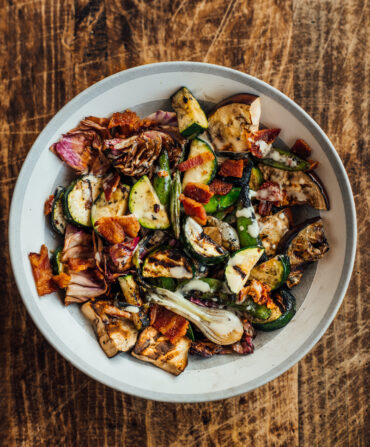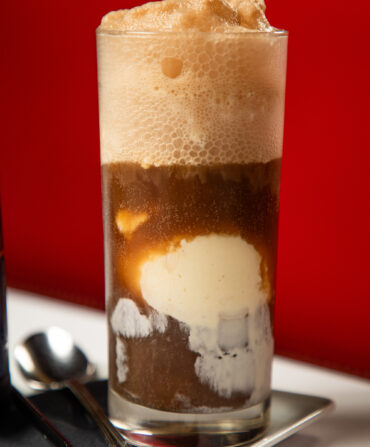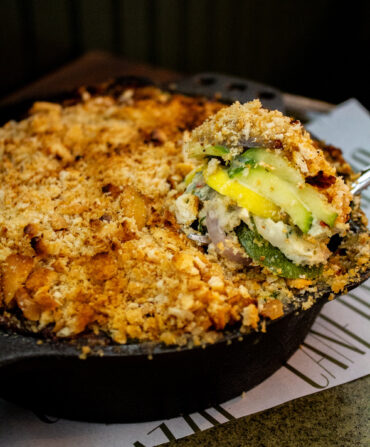While country ham and salami are hardly foreign to New Orleans these days, they were rarities in the along the Gulf Coast two centuries ago. “We can’t hang meats outside here. They rot,” says Isaac Toups, who runs the kitchen at Toups’ Meatery. In the years before the advent of refrigeration, locals had to find other ways to keep the pantry stocked.
As Toups tells it, one of the best-known snacks of old New Orleans owes its existence to just those circumstances. “As any chef knows, when you reduce a stock down to a glace, it lasts longer,” he says. Daube is a nourishing beef and vegetable stew with French roots. When Creole cooks simmered the leftovers into a sliceable, shelf-stable concentrate, they inadvertently created daube glacé, a meaty aspic most often consumed on crackers and mayonnaise-slicked po’boys. “People used to rehydrate the glace into soup,” Toups says. “One day, somebody hungry must have cut off a slice and been like, ‘Hey, this is good!’”
Nowadays, many cooks in New Orleans make daube glacé using reliable store-bought gelatin, rather than the gelatins already present in beef stock and in pigs’ feet—an extra ingredient in some vintage recipes. Others have abandoned the dish altogether. Toups, however, doubts it will ever vanish. “I think it will probably stay endangered,” he says. “But there will always be people down here saying, ‘Let’s try these old-school classics.’”
Daube glacé is a labor-intensive dish, best reserved for special occasions. If you’re in New Orleans, you don’t have to make it yourself: Langenstein’s grocery store offers a fine version. And so does Toups’ Meatery, as a recurring special. Toups and his cooks make it the old-fashioned way, reducing stock until it becomes a gelatin setting for herbs, vegetables, and hunks of tender beef. If you’re looking for a show-stopping holiday centerpiece, start simmering a pot of bones—or better yet, gelatin-rich feet—now.








